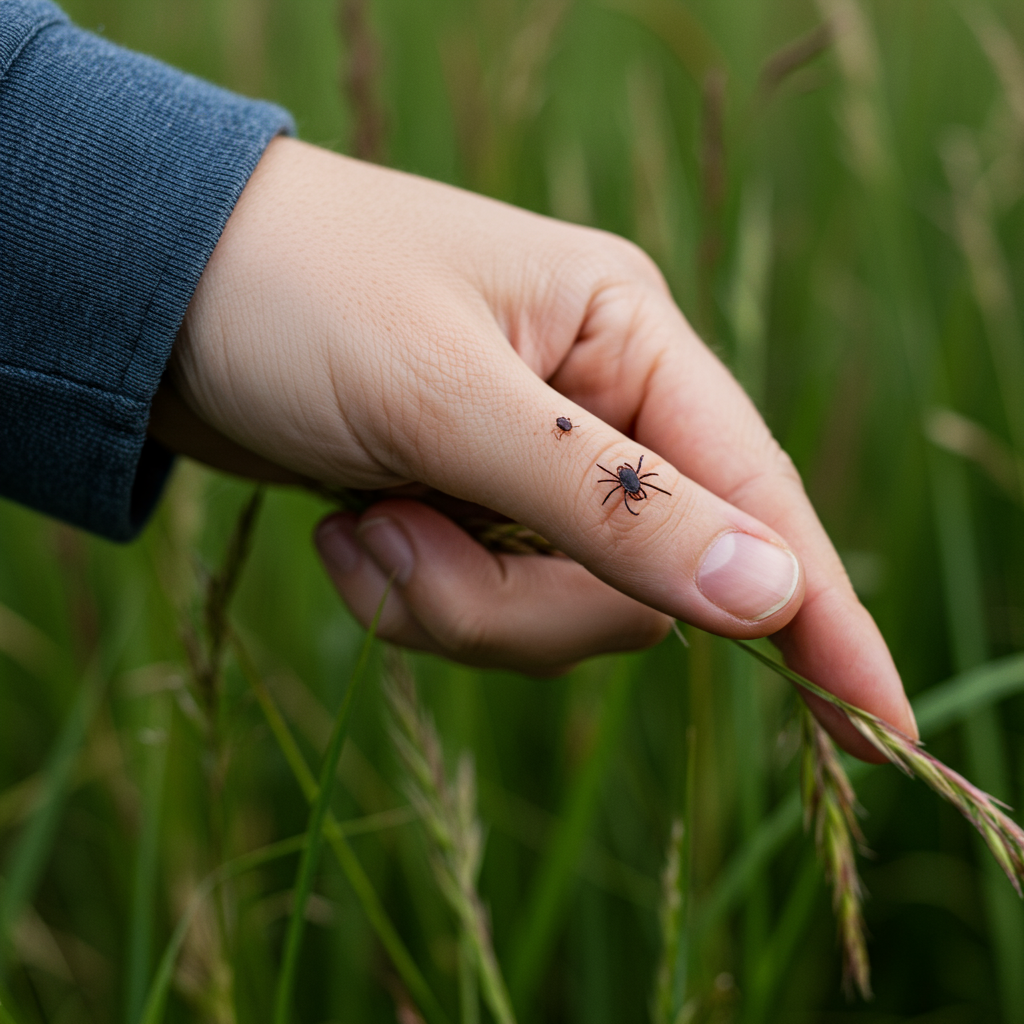New england is grappling with what experts are calling one of the most severe tick seasons in recent memory. Across the region, residents are reporting a dramatic surge in tick encounters, sparking heightened concern over tick-borne illnesses like Lyme disease and the increasingly prevalent Alpha-gal syndrome. Data from health authorities and firsthand accounts paint a clear picture: <a href="https://news.quantosei.com/2025/07/07/why-tick-season-is-worse-than-usual-and-how-to-protect-yourself/” title=”Essential Tick Protection: Why This Season's Worse, How to Act”>ticks are more active, more numerous, and posing a greater risk this year than in previous seasons. This unprecedented situation is impacting daily life, from enjoying local hiking trails to simply working in the garden, forcing many to rethink how they interact with the outdoors.
An Outlier Year: Understanding the Surge
Official health data confirms what many New Englanders are experiencing firsthand. According to Centers for Disease Control and Prevention (CDC) data, emergency room visits for tick bites in the Northeast reached their highest levels in at least five years this June, nearly doubling the national average with 233 visits per 100,000. Massachusetts state health department records mirror this alarming trend. Data shows over 0.6 percent of emergency department visits in May were linked to tick exposure, a notable jump from around 0.4 percent in the preceding years (2022-2024). Massachusetts State Epidemiologist Dr. Catherine Brown described this increase as indicative of a genuine rise in human-tick interactions, labeling it an “outlier” year.
Why Are Ticks Thriving This Season?
Several factors are converging to create this particularly challenging tick season. A primary driver is the significant proliferation of blacklegged tick nymphs, often called deer tick nymphs. These poppy-seed-sized creatures are incredibly difficult to spot and are responsible for the majority of Lyme disease transmissions in New England. Approximately 20 percent of these nymphs in the region carry the bacterium that causes Lyme.
Thomas Mather, director of the University of Rhode Island’s Center for Vector-Borne Diseases, points to increased humidity as a key factor supporting the nymph population. Dry conditions in late spring and early summer are typically detrimental to their survival. However, a warmer atmosphere holds more moisture, leading to increased humidity – a consequence of climate change. This creates a more favorable environment for nymphs to thrive. Ken Mahan, the Globe’s lead meteorologist, supports this link, noting a rising trend in high dew point days (above 65 degrees) in Boston. Robust populations of small rodents and deer, which serve as main food sources for deer ticks, also contribute to their sustained numbers.
A Shifting Threat: Lone Star Ticks Arrive
Adding to the complexity of the New England tick landscape is the noticeable northward migration of the Lone Star tick. Historically common only in the Southern U.S., this aggressive tick species is rapidly expanding its range. Data from Mather’s TickSpotter project shows a staggering increase of over 300 percent in reported encounters with Lone Star ticks in the past three years.
Areas in Southeastern Massachusetts and Rhode Island are experiencing significant expansion. Locations like Martha’s Vineyard and Narragansett Bay are now considered heavily infested. The bite of a Lone Star tick is notorious for triggering Alpha-gal syndrome, a potentially life-altering allergy to red meat and dairy products. This allergy results from a sugar molecule called alpha-gal present in the tick’s saliva, which is then transferred to the bitten person. Residents like Lynne McCormack on Martha’s Vineyard, who finds ticks daily despite precautions, and Allison Cameron Parry, who manages the significant dietary challenges of Alpha-gal syndrome, highlight the real-world impact of this spreading tick. Parry voiced anxieties about her young son playing outdoors due to the increased risk, particularly for children.
Essential Steps for Tick Prevention
Given the severity of this tick season, taking proactive prevention measures is crucial for anyone spending time outdoors in New England. Experts emphasize that vigilance and prompt action can significantly reduce the risk of tick bites and subsequent illness.
Proven Prevention Techniques:
Treat Clothing: Specialists like Richard Pollack of Harvard University recommend treating clothing and gear with permethrin. This insecticide repels and kills ticks on contact and remains effective through multiple washes.
Wear Protective Clothing: Opt for light-colored clothing to make ticks easier to spot. Wearing long sleeves and tucking pants into socks creates a barrier, minimizing exposed skin.
Regular Tick Checks: Conduct thorough checks on yourself, family members, and pets after coming indoors, even from short exposures like gardening or yard work. Pay close attention to hidden areas like armpits, behind knees, in hair, and around waistbands.
Use Repellent: Apply EPA-registered insect repellents containing DEET, picaridin, IR3535, Oil of Lemon Eucalyptus (OLE), para-menthane-diol (PMD), or 2-undecanone to exposed skin. Always follow product instructions.
Dry Clothes on High Heat: Placing clothes in a dryer on high heat for at least 10 minutes after outdoor activity can effectively kill any ticks that may have hitched a ride, even if the clothes are clean.
Dealing with Attached Ticks
If you find an attached tick, prompt and proper removal is vital. The Lyme disease bacterium, for example, typically requires 24 to 36 hours of attachment to be transmitted. Therefore, removing a tick quickly can prevent infection.
Immediate Removal: Do not wait for medical help to remove a tick. Use fine-tipped tweezers to grasp the tick as close to the skin’s surface as possible. Pull upward with steady, even pressure. Avoid twisting or jerking.
Save the Tick: Save the removed tick in a sealed bag or container with a small piece of damp paper towel. This can be helpful for identification later if symptoms develop.
Clean the Area: Thoroughly clean the bite area and your hands with rubbing alcohol or soap and water.
- Consider Post-Exposure Prophylaxis: Because accurately determining how long a tick has been attached is difficult, experts like Dr. Daniel Solomon of Mass General Brigham recommend a single dose of doxycycline within 72 hours of removing an attached blacklegged tick in endemic areas, provided certain criteria are met. Consult a healthcare provider.
- www.bostonglobe.com
- www.bostonglobe.com
- www.bostonglobe.com
- www.bostonglobe.com
- www.bostonglobe.com
Pet owners should also take precautions. Oral medications and topical treatments are highly effective in preventing tick bites on dogs and cats, who are also susceptible to tick-borne illnesses.
Future Outlook and Research
The increased risk of tick-borne diseases in New England is a significant public health challenge, but research is ongoing. A Lyme disease vaccine developed by Valneva and Pfizer is currently in late-stage clinical trials, potentially offering a new tool for prevention. The University of Massachusetts Medical School’s MassBiologics is also developing an antibody for Lyme disease pre-exposure prophylaxis (PrEP), which could provide temporary immunity, though human trials are yet to begin. An earlier Lyme vaccine was approved in 1998 but later discontinued due to low demand.
For Alpha-gal syndrome, while no human prophylaxis currently exists, scientists at the University of Michigan have tested a nanoparticle treatment that successfully reduced allergy symptoms in mice bitten by Lone Star ticks. This offers a glimmer of hope for future therapeutic interventions.
Despite the challenges posed by this severe tick season, experts like Dr. Brown encourage people to continue enjoying the natural beauty of New England. By understanding the risks and implementing the necessary precautions, individuals can significantly protect themselves and their families. Stay informed, be vigilant, and take action against ticks this season.
Frequently Asked Questions
Why is the New England tick season so bad this year compared to others?
This year’s severe season is attributed to several factors. Increased humidity in late spring and early summer, linked to climate change, has created ideal conditions for blacklegged tick nymphs to survive and thrive. Robust populations of host animals like small rodents and deer also support larger tick numbers. Additionally, the aggressive northward migration of Lone Star ticks into the region, previously common only in the South, is contributing to increased encounters and risks like Alpha-gal syndrome.
Where are tick risks highest across New England?
Tick risks are elevated across the entire New England region this season. Based on available data, particularly concerning areas include Southeastern Massachusetts and Rhode Island, where Lone Star ticks are significantly expanding their presence. Martha’s Vineyard and areas around Narragansett Bay are specifically noted as being heavily infested. While deer ticks carrying Lyme are widespread, these areas face the added threat of Alpha-gal syndrome from Lone Star ticks.
What are the best ways to prevent tick bites and tick-borne illnesses?
Effective prevention involves multiple strategies. Treating clothing and gear with permethrin and wearing light-colored, long-sleeved clothing tucked in are highly recommended. Regularly applying EPA-approved insect repellent to exposed skin is also key. After spending time outdoors, perform thorough tick checks on your body, children, and pets. Promptly remove any attached ticks with fine-tipped tweezers. Drying clothes on high heat after coming indoors can kill unseen ticks. For pets, using prescribed tick prevention medications is essential.




